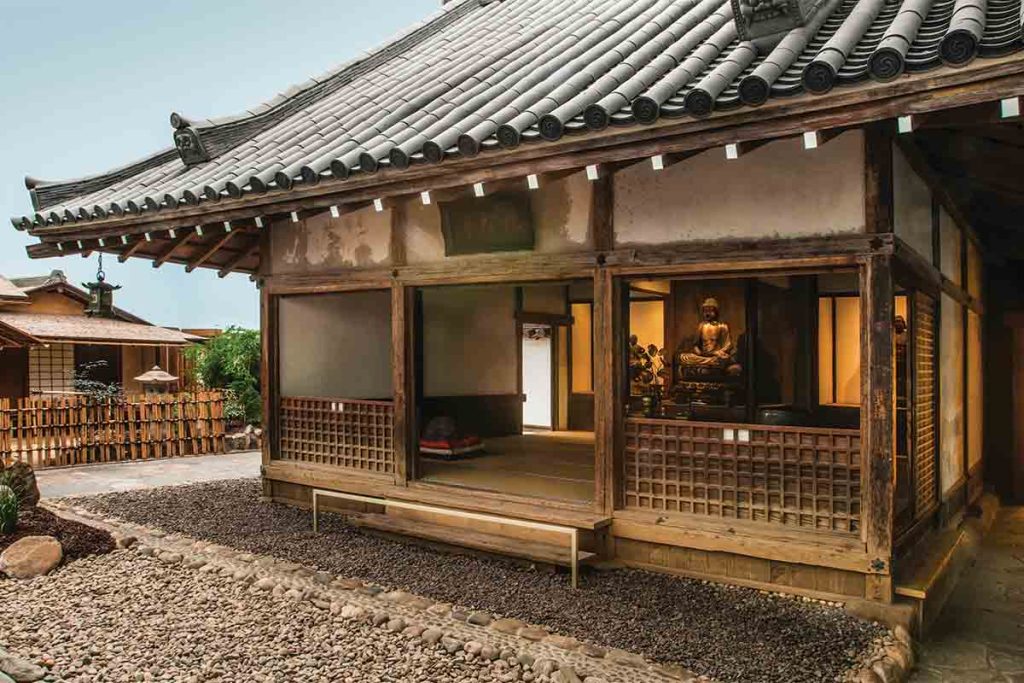“Love silence, even in the mind,” wrote William Penn, Philadelphia’s founding father. “True silence is the rest of the mind, and is to the spirit what sleep is to the body, nourishment and refreshment.” Penn, a Quaker, is still revered by locals for instilling the city with values unusual in the colonial era, such as religious tolerance. Today, the city is home to healthy populations of many faiths, and Buddhism is one of them. Philly has over 40 Buddhist temples, meditation centers, and other affiliated organizations, according to the Jivaka Project, an academic study of Buddhist health practices led by Penn State professor Pierce Salguero. A majority of these predominantly serve local Asian communities. The city’s Asian population, estimated at around 100,000, has roots stretching back to the mid-1800s, and a 2014 Pew study that estimates the city’s number of Buddhists at 15,000 doesn’t include the thousands who commute to the city for services.
1|Philadelphia Museum of Art
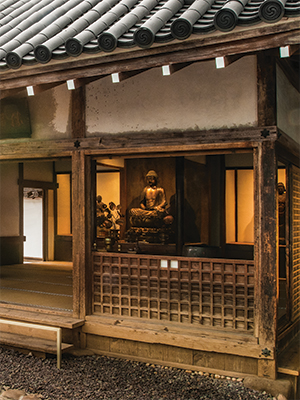
You won’t want to miss the authentic Japanese Buddhist temple from 1398 inside Philadelphia’s largest art museum. The Shofukuji (Temple of the Attainment of Happiness) originally hails from Katagiri village in Nara prefecture; after being disassembled in 1928, it was acquired by the museum. Its roof is upheld by twelve cypress posts, and inside is a gilded wooden Amida Buddha. Adjacent galleries include a century-old teahouse, a Ming dynasty reception hall, and priceless Buddhist relics. (We would be remiss not to mention that Philly’s Penn Museum—formally the University of Pennsylvania Museum of Archaeology and Anthropology—has even more Buddhist artifacts on display, including a Chinese Maitreya Buddha made in 536 CE.)
2600 Benjamin Franklin Parkway
philamuseum.org
2|Wat Khmer Palelai Monastery
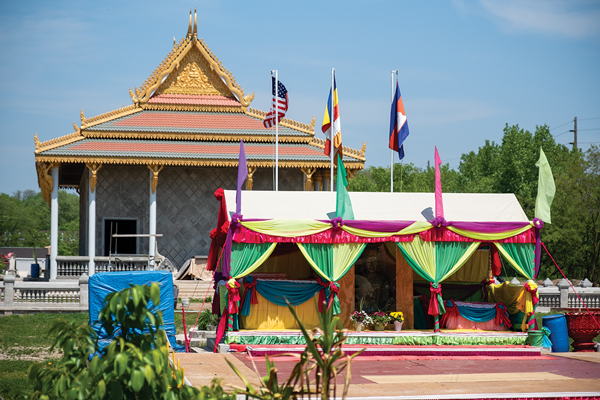
Founded in 1986, the Wat Khmer Palelai Cambodian Buddhist community started out in a South Philly row house. In 2010, they decided to spread their wings, building on a 238,000-square-foot plot of land. The gorgeous traditional temple and monastery took nearly a decade to complete, as it was funded one small donation at a time from the thousands of community members who flock to this site for holidays like the Khmer New Year.
2651 South 58th St.
3|George Nakashima Woodworkers
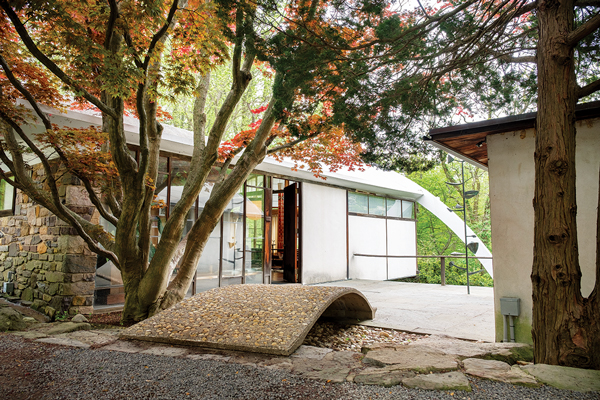
A woodworker and architect of Zen Buddhist and samurai heritage, George Nakashima (1905-1990) also counted Hinduism, Christianity, and Druidism among his spiritual influences. His modernist furniture designs were intended to honor and give new life to the trees from which they were made, and combined straightforward functionality with the Buddhist concepts of mushin (“no-mind”), and muso (“formlessness”). This 12-acre oasis, the site of his home and studio in New Hope, 30 miles north of the city, includes several pieces of his work on display as well as access to his garden filled with cherry trees.
1847 Aquetong Road, New Hope
Open to the public Saturdays, 1-4:30 p.m.; appointments available
4|Wissahickon Valley Park/Shofuso House
Philly has 9,600 acres of green space spread across 63 individual parks. Wissahickon Valley Park, which boasts 50 miles of trails alone, still has the cave where a group of Christian hermits led by Johannes Kelpius are said to have camped in 1694 to await the End of Days. In West Fairmount Park, the Japan America Society of Greater Philadelphia maintains the Shofuso Japanese House and Garden, complete with a koi pond, Japanese flora, and traditional gardens. Here is the perfect opportunity to lose yourself in 17th-century Kyoto for a little while.
Shofuso House: Lansdowne & Horticultural Drives
5|The Chenrezig Tibetan Buddhist Center of Philadelphia
This community was founded by Geshe Losang Samten, a former personal attendant to the Dalai Lama and a renowned sand mandala painter. In 1989, members of the Philadelphia community asked the Dalai Lama to allow Geshe Losang to stay in the US as their teacher; His Holiness agreed, and Philly has been Losang Samten’s home ever since. Two years ago, the sangha purchased a building near the Northern Liberties neighborhood, where classes, teachings, and drop-in meditation sessions are offered.
954 North Marshall Street
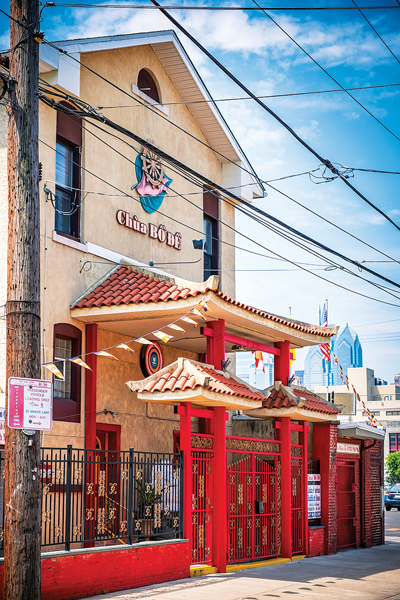
6|Ethnic Eats Food Tour
Most of Philly’s Buddhist temples and Asian community are concentrated in South Philadelphia, and this food tour can guide you to Thai, Vietnamese, and Indian restaurants within a few blocks of each other, as well as an Asian supermarket. The tour also brings visitors inside the Chua Bo De temple at South 13th Street and Washington Avenue, reputedly the first Vietnamese Buddhist temple in Philadelphia; it is usually not open to the public.
Public tours offered on Sundays
phillysfoodtour.com
7|Phra Buddha Ransi Temple
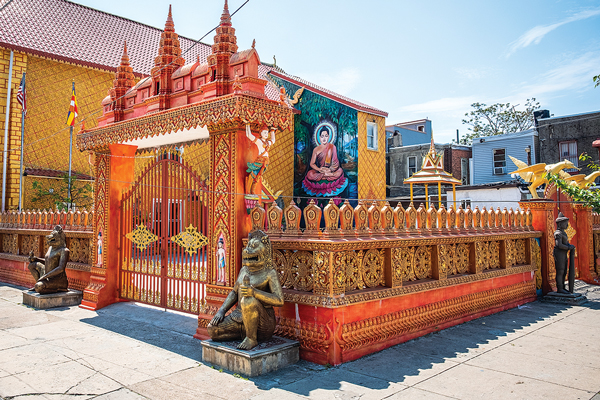
Phra Buddha Ransi’s colorful pillars emerge from rows of identical-looking residential blocks deep in South Philadelphia. In 2004, the Cambodian temple moved into the crumbling former St. Andrew’s Lutheran Church, built in 1903. After the building was rehabbed by the Khmer Buddhist Humanitarian Association, Buddhists quickly filled the space to capacity, and the temple also acquired a vacant Jewish synagogue across the street.
2400 S. 6th St.
Thank you for subscribing to Tricycle! As a nonprofit, we depend on readers like you to keep Buddhist teachings and practices widely available.
